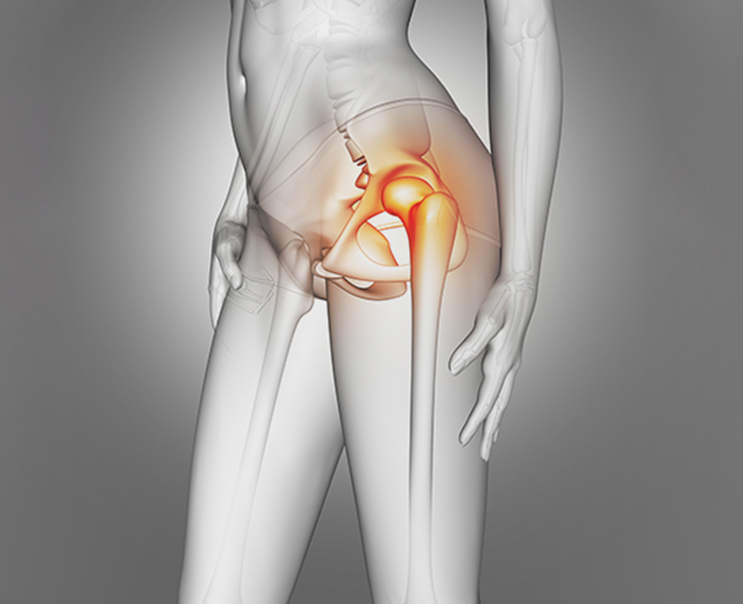Turkishdoc
The Introduction To Hip Dysplasia
A hip socket that does not cover the ball of the upper thigh bone is called hip dysplasia. This condition, which causes the hip joint to dislocate, is congenital. This hip dysplasia, which is caused by a mismatch between the bones, can cause a big problem. By detecting this condition early, which is typically discovered shortly after birth, it can be treated more effectively. Therefore, hip dysplasia can also be defined as a birth dislocation. This condition can also occur in adolescence and youth. Until then, it can develop asymptomatically and damage the cartilage covering the joint. In some cases, the condition can be caused by congenital factors, and in others, it can be symptomatic. In cases of symptoms or during childbirth, the necessary checks are carried out to make a diagnosis. If a diagnosis is made, appropriate treatment methods are applied according to the patient’s age, health, and hip dysplasia condition. In most cases, pavlik harnesses or surgery are the most effective treatments.
Symptoms Of Hip Dysplasia
Hip dysplasia, a congenital disorder, creates an anatomical incompatibility in the hip bone. This condition, which is usually seen in infants, also occurs in adulthood. It lowers the quality of a person’s daily life because it causes severe joint damage. In general, the symptoms of this condition differ according to the age group. Infants, children, adolescents, and adults experience different symptoms. The symptoms of hip dysplasia according to age groups are as follows:
- One leg appears longer than the other in infants
- Limping when walking is common in children, adolescents, and adults
- Pain in the buttocks in young people and adults
- Delay in crawling, sitting, and walking in children
- Instability in the hip
Hip dysplasia diagnosed during infancy can be treated without waiting for symptoms to appear. However, if the necessary controls are not carried out, these symptoms may begin to appear in childhood, adolescence, or adulthood. These symptoms appear as the hip joint starts to be damaged. These symptoms may also indicate labral tears, especially in women. Therefore, it is important to consult a doctor when these symptoms appear. If one or more of these symptoms are consistently observed, the doctor will perform an evaluation using diagnostic methods. According to the results of the evaluation, the appropriate treatment method will be determined, and the implementation phase will begin.
Causes Of Hip Dysplasia
The exact cause of hip dysplasia is unknown. However, the process in the womb and the conditions during birth are important factors in the development of this problem. Some factors can also trigger the development of this condition. According to studies, the following are among the causes of hip dysplasia:
- First pregnancy
- Genetic factors
- Decrease in amniotic fluid
- Breech birth
- Labral tears
In general, congenital factors are among the causes of hip dysplasia. Among the risk factors are girls. According to the results of the research, the wider hip bones of girls cause this condition. At the same time, the hip bone may be damaged as a result of the baby being squeezed as a result of the uterus not expanding during the first pregnancy. Anatomically, it occurs as a result of the ball not sitting on the end of the hip bone. Hip dysplasia that occurs due to all these reasons is a condition that requires treatment.
In addition to all these, hip labral tears are known to cause hip dysplasia. Pain, locking, or stiffness in the hip joint are among the most important symptoms of this condition. If this condition, which is more common in women, causes hip dysplasia, detailed evaluations are performed. Both require appropriate treatment by specialists. Therefore, labral tears are one of the important causes of hip dysplasia.
Treatment For Hip Dysplasia
It is important to treat hip dysplasia, which is a common and serious condition. This condition, which is detected by health screening after birth, can be treated in infancy. After the diagnosis is made by physical examination and hip ultrasound, the results are evaluated. As mentioned before, treatment is applied according to age.
If diagnosed in infancy, babies are given appropriate treatment. For this purpose, sensitive orthopedic supports are used as a treatment method. The pavlik harness, for example, tightly grips the ball at the end of the hip bone and helps it to fuse. This orthopedic support is used for about 6–12 weeks. This treatment method, which usually has positive results, can sometimes be contradictory. Therefore, if orthopedic treatments are not sufficient in infancy, surgical interventions may be required. This treatment is performed under general anesthesia to position and repair the joint ball. It is then inserted into the hip bone, and the healing process begins.
Hip dysplasia in adolescence and adulthood is usually treated surgically. This is because the joint is extremely damaged in this process, which causes some symptoms. Surgical interventions are considered appropriate for adolescents and adults who have this condition that limits physical movement. Painkillers and injectable medications are given by the doctor before surgery, especially for pain relief. The main aim of the surgical procedure is to completely correct and repair the joint. If this treatment method is insufficient, it can also be supported by a prosthesis. However, it should be noted that congenital hip dysplasia cannot be completely prevented. Therefore, early diagnosis in infancy is extremely important. Thanks to early diagnosis, surgical interventions are not required, and orthopedic treatment methods come into play.
In conclusion, hip dysplasia is a congenital condition that occurs due to certain factors. Since it can also be characterized as asymptomatic, there are no symptoms during infancy. It can be diagnosed early with screening methods and thus treated painlessly. When hip dysplasia is not treated in infancy, symptoms begin to appear at a later age. Especially in adolescence and adulthood, surgery or prosthetic implementations are required. After the treatment process, it is possible to move with the support of crutches for about 2 weeks. Complete recovery from hip dysplasia takes between 2 and 4 months. Symptoms are relieved and physical health is not jeopardized as a result of the treatments used.











